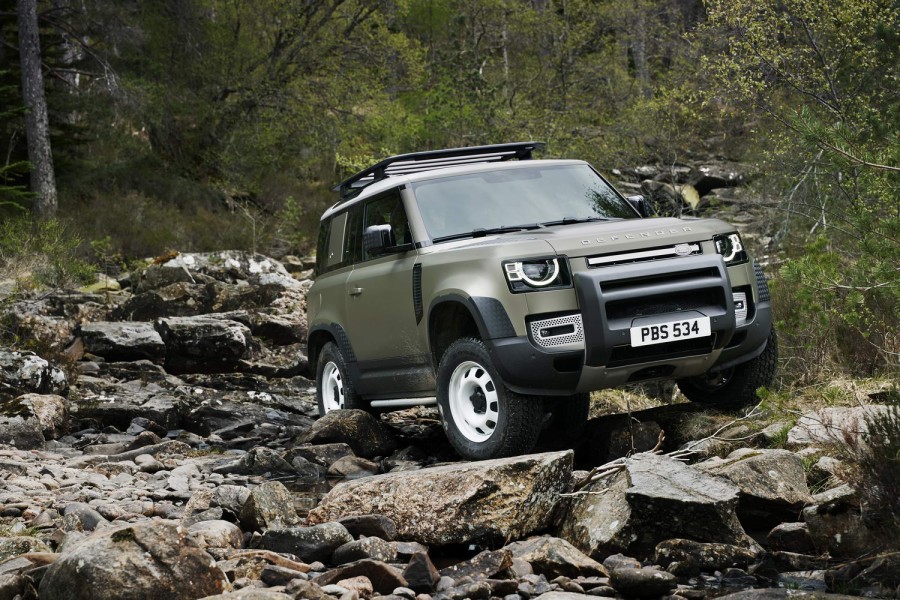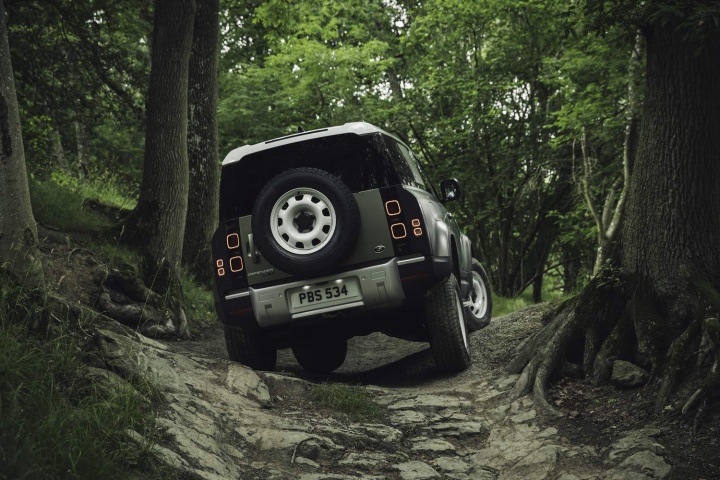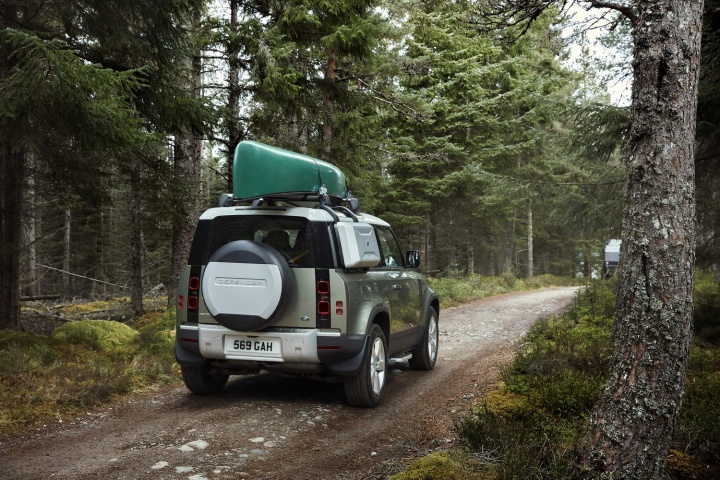Creating the new Land Rover Defender was no easy task; according to its designer it amounted to "redesigning the last automotive icon." Its shape is one that has always been instantly recognisable and, from most angles, that's still the case for this entirely new version, revealed at the 2019 Frankfurt Motor Show. Like its predecessor, the new Defender will be offered in short and long wheelbase guises, which Land Rover calls the 90 and 110 respectively.
A modern take on classic styling
Considering how stringent crash and pedestrian impact safety has become, and the knock-on effect it has on design, the Land Rover team has done a great job in retaining the rugged and boxy shape that the Defender is so well-known for. The bonnet features a distinctive bulge and has Defender across its front. That name will form the third pillar of the Land Rover brand after Range Rover and Discovery. On either side of the bonnet are diamond plate finish inserts, which look like cheap add-ons, much like the fake bonnet vents on the Range Rover Sport. Thankfully they're just about the only duff bits of design on the car.
Subtle nods to the original
Fans of the previous Defender won't be too disappointed when they spot some of the design 'Easter eggs' that have made it through to this new model. Alpine windows in the roof and the upright back door, which also carries a full-size spare wheel at its centre, are just two features that look as if they're lifted straight from the original. The rear lights sit flush with the bodywork, which short front and rear overhangs, of 845- and 891mm respectively, add to the Defender's off-road capabilities.
No lack of ability off-road
It might look like a style icon to some, but for many others, a Defender is a tool and one that gets used well off the beaten track. With that in mind, Land Rover's engineering team created an entirely new aluminium monocoque chassis, which it claims is ten times stiffer than a typical body-on-frame design. It can tackle approach angles of 38 degrees and, thanks in part to that spare wheel being affixed to the tailgate, has a departure angle of 40 degrees. The standard suspension is made up of front double wishbones and an integral link at the rear, while air suspension is also available optionally. The standard ground clearance is 291mm, and there is up to 500mm of suspension travel, while the wading depth is 900mm. That stiffer body can withstand seven tons of vertical load and has a 6.5-ton snatch load rating. The roof can carry up to 268kg at speed and when parked can hold up to 300kg, making it ideal to use as a place to pitch your tent, apparently. And yes, Land Rover will have a host of accessories to support this, including a side-mounted ladder and hard pannier cases. Alternatively, buyers can specify a panoramic glass roof or a retractable fabric 'safari' roof.
Four engines including a mild hybrid option
From its launch, the Defender will come with the choice of two diesel models, the D200 and D240. Both are powered by turbocharged four-cylinder engines that generate 430Nm of torque (the model designations refer to power output in hp); the more powerful D240 matches the 200hp D200 for efficiency while adding better acceleration. Two petrol models will also be available, starting with the turbocharged four-cylinder P300 that produces 300hp and can accelerate from 0-100km/h in 8.1 seconds. A turbocharged six-cylinder P400 featuring twin-scroll turbocharging also uses an electric supercharger, powered by a 48-volt mild hybrid system, to create 400hp and 550Nm of torque. All engines are fitted to an eight-speed automatic twin-speed transmission with low-range ratios.
A connected and utilitarian interior design
If you thought the exterior looked tough, wait until you look inside. It was never going to be difficult to add more comfort to the cabin of the Defender. After all, the last one wasn't what you'd call plush. What the designers have done is to leave many of the essential parts exposed. Not only does this save weight, but it also adds to the practical image of the car. A full-length magnesium die-cast beam stretches across the front of the dashboard and is capped at either end my handles. Not only can these be used to pull yourself up into the cabin, but they're also strong enough should you need to either push the car or climb out when you inadvertently put it in a ditch.
An optional 'jump seat' for the front will slot in between the main front seats and when not in use can fold flat to serve as a centre console with built-in cupholders and charging ports. Alternatively, a regular console will be available, including the option of a fridge unit, or buyers can go without to leave more free space between the front seats and allow for a walk-though to the rear thanks to the fitment of the gear selector on the dash fascia rather than on the floor.
A new steering wheel features multifunction controls and a metallic frame that comes in three different finishes. A 12.3-inch TFT display for the instrument cluster is available along with a colour head-up display. Land Rover has created a new infotainment system that is not only better to use, but is permanently connected thanks to a built-in sim card. Other tech features will include 360-degree cameras and ultrasonic sensors that can detect the depth of water the Defender is driving through.
More versions still to come
Following the launch of the Land Rover Defender 90 and 110, there will be a dedicated commercial version in both wheelbases and with N1 compliance. Furthermore, Land Rover plans to introduce a plug-in hybrid version of the Defender, possibly as early as late 2020.



